The Fundamentals of Fried Tofu
I'm incredibly fond of fried tofu and, rather unfortunately, it's oftentimes not cooked well. Tofu is not meat. It doesn't look, taste, or have anywhere near the texture or consistency as meat. So, calling it a "meat substitute" is kind of a misnomer. Especially given the prevalence of "I can't believe it's not meat," a la the I Can't Believe It's Not Butter movement. Although, just like the butter, these "meat" substitutes are full of processed ingredients, artificial flavorings, and added salts, sugars, and fats that make them vaguely resemble meat products.
So, calling tofu a "meat substitute" really isn't fair to tofu. And has led to decades of really poorly prepared tofu.
I oftentimes cook meals where people just exclaim with a kind of joy, delight, and slight confusion: "What is that?" Because it looks and tastes nothing like what the collective consciousness has thought of tofu as being.
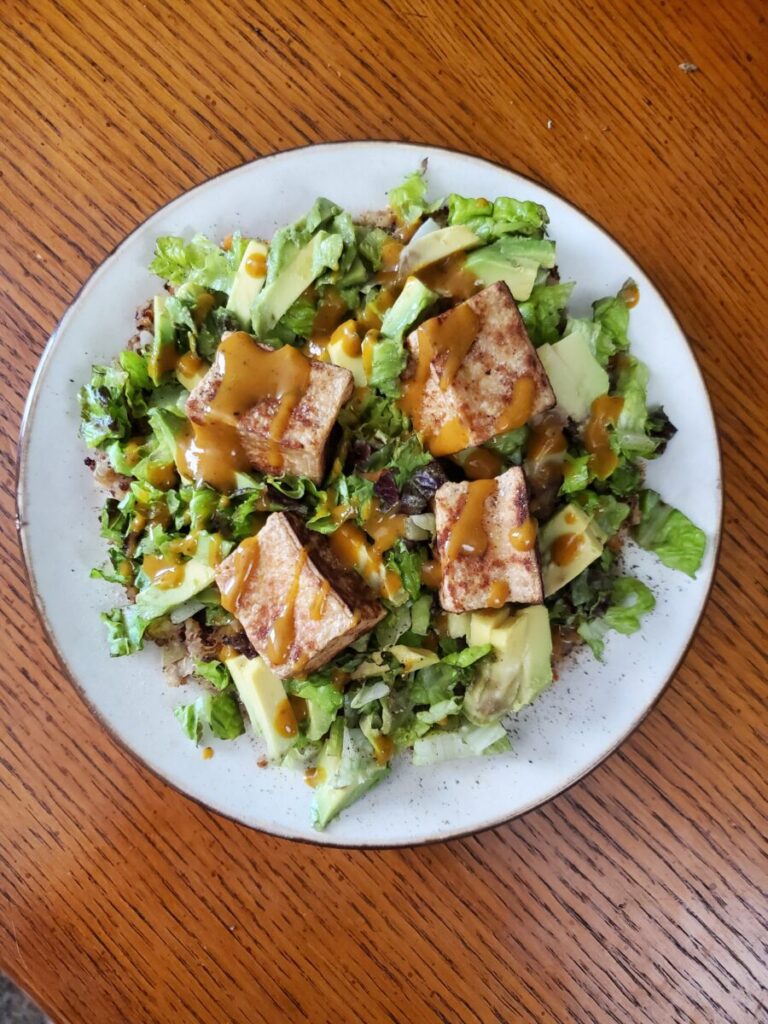

What to Avoid when Cooking Fried Tofu
The problem is that a lot of the time, people didn't know how to cook it.
Tofu is constantly being treated like meat. But tofu isn't meat! And marinating and searing it like it is can lead to an overly acidic, burnt mess!!
This is because tofu has very little flavor of its own. Rather, it takes on the taste of everything around it. So you have to be very careful not to over spice it! Especially if there's any vinegar or salt in it.
I tend to cook tofu as is, without marinating or spicing it at all, and letting it take on the flavor of the dish. It's better to add it into things, like curries and soups, or to cover it in sauce after cooking, like BBQ tofu.
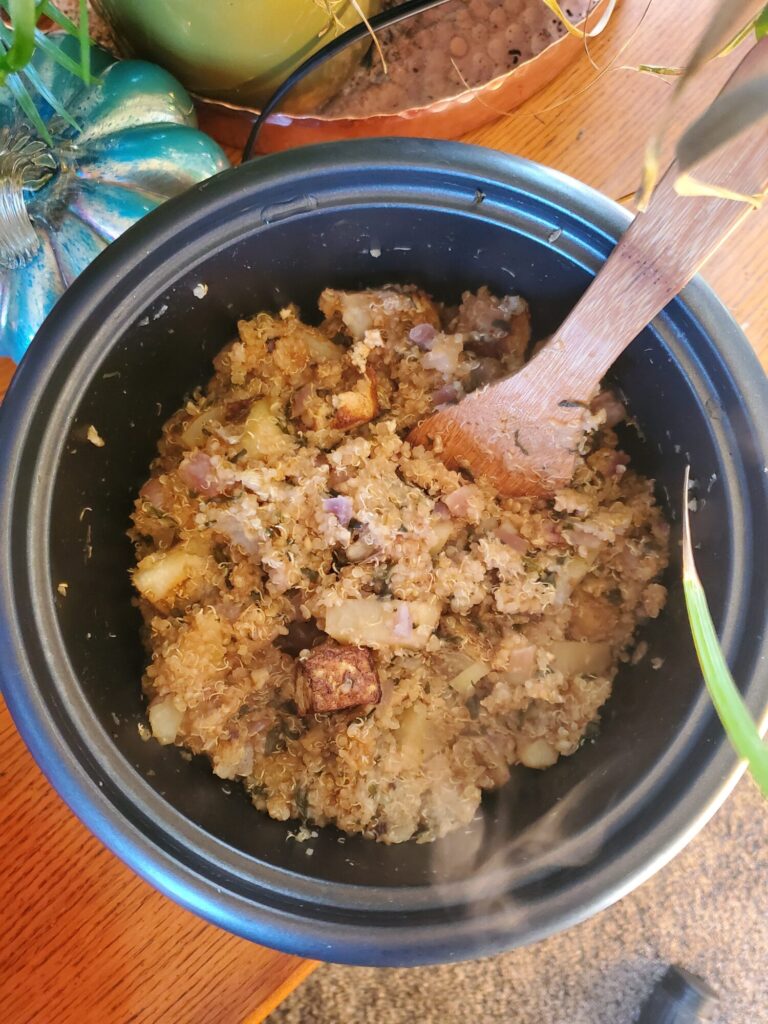

Types of Tofu
Tofu is graded from silken to extra firm. I pretty much use extra firm for everything because it holds its shape better. But there are varieties typically ranging from silken, soft, medium, firm, extra firm, and super firm. These are all the same kind of tofu, they just have varying amounts of water pressed out of them. The more water, the softer it is. The less water, the firmer it is.
Although note that store-bought tofu is usually packaged in water, which has nothing to do with the level of water content still present. This is something that happens in the manufacturing process, not the packaging!
How long tofu takes to cook depends on the water content. That's why it's recommended to squeeze out as much water as possible before frying.
Silken
Silken tofu is unpressed and has the highest water content. It's a Japanese-style tofu that is often puréed into desserts, smoothies, or as an egg substitute. You can use other types of tofu in baking as well, but it will add a thicker consistency.
Soft
Soft tofu is pressed and has a higher water content than silken, but is still relatively soft on the firmness scale. It's the Chinese-equivalent to silken tofu and marginally pressed. It can be used in much the same way as silken, but won't have as smooth a consistency.
Medium
Medium tofu is almost as firm as firm tofu and can often be used interchangeably. It works best in soups and stews.
Firm
Firm tofu is on the firmer scale of tofu. This is typically the kind of tofu used for vegan scrambles and cheese crumbles. If you can't find extra or super firm tofu, it's a fine substitute. It may break apart a little bit more, but will generally hold its shape.
Extra Firm
Extra firm tofu is the densest variety of tofu and will have higher levels of protein. It will keep its shape the best when cooking and frying. Although, they will take longer to cook because of this higher concentration.
Super Firm
Super firm tofu is less often found in typical grocery store, which tend to only cary soft, firm, and extra firm. It has the lowest water content and takes well to frying. Although it can dry out too quickly because of this. (Kitchn's What's the Difference Between All the Types of Tofu?)
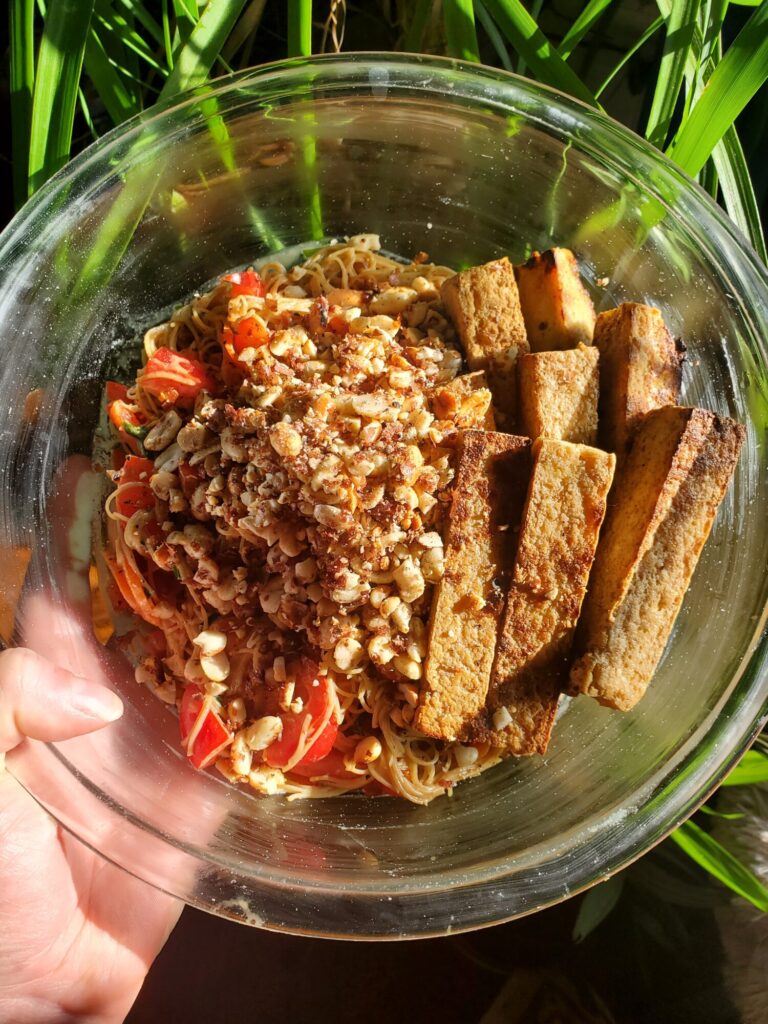
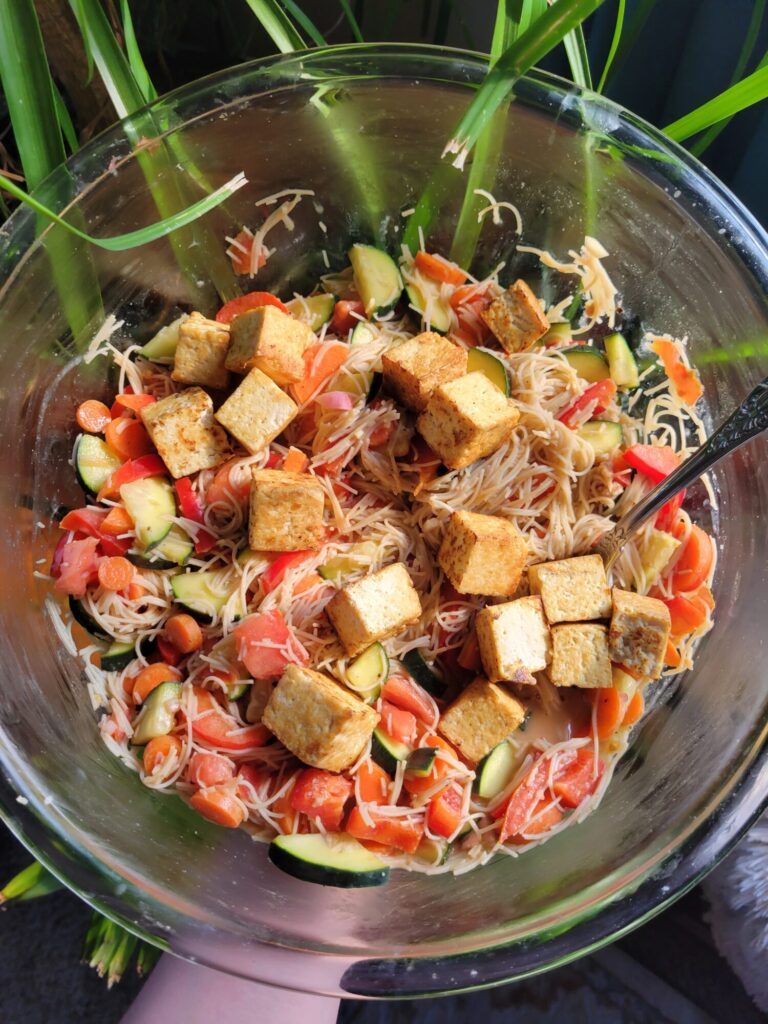
How to Cook Fried Tofu
The second thing to avoid is over cooking tofu. This can be easy to do because tofu dries out easily and then becomes chewy. One of the best things about tofu is that it's crisp on the outside, but soft on the inside. When you cook tofu for too long, this all goes away!
This is why tofu doesn't bake well. You always see people try to bake tofu in the oven, but this very rarely turns out! It takes too long to cook, shrivels, and gets chewy.
Tofu is more suited to a quick cook and is far better fried. Deep frying it or lightly frying it in a skillet will give a crisp outside with a soft inside.
The only exception to this that I recommend is in curries. That's because curries are wet, so you're not drying out the tofu. If you don't fry it beforehand, the tofu will slowly cook and kind of dissipate into the curry, much like how a potato will. If you want it to keep its shape, lightly fry the tofu beforehand and pat off the excess oil before adding to the curry. That way it will slowly cook to absorb the flavor of the curry, but won't disintegrate.
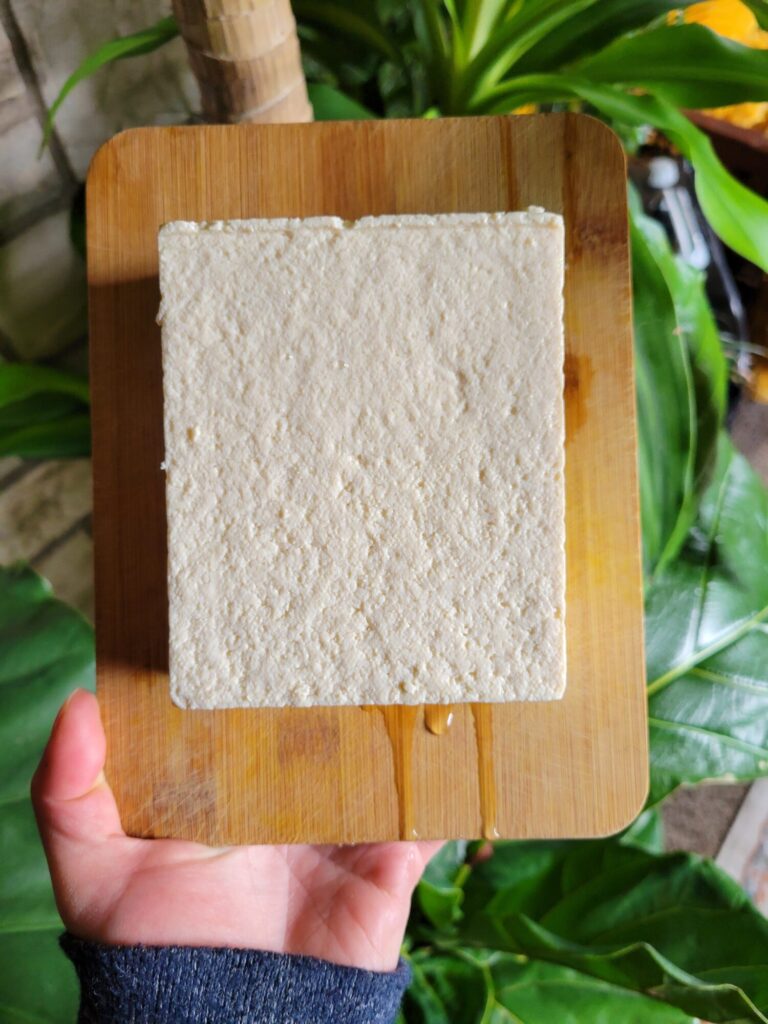
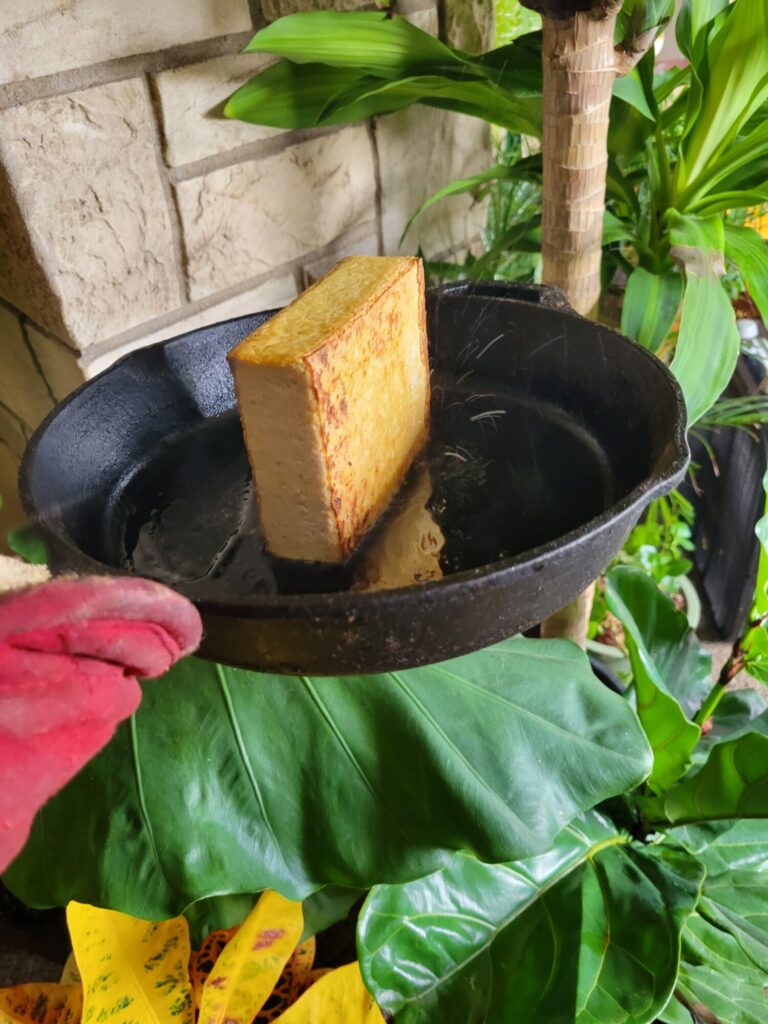
Beware of the Reaction Between Water & Oil
It's important to note that there is a lot of liquid in tofu. After all, it's almost always stored in a water brine! That means that tofu is incredibly waterlogged. It can seem obvious to drain this in order to actually be able to handle the tofu. But it's also important to soak more of the liquid out of it.
This is because water and oil do not mix. If you put the two in a jar and shake it, the water and oil. will very quickly separate from one another. This is part of how frying works. The reaction between the water in the food and the oil in the pan, deep fryer, or frying method of choice, will cause the outer edge to crisp rapidly, especially at high heat.
However, you do not want to put high levels of water and oil together.
Best case scenario? This sputters a little bit and you know to keep your hands, clothes, and anything flammable away from it. Since there is water in tofu, it will inevitably likely sputter a little bit, you can see this happening in the photo above. Although please don't do like I'm doing and try to get a photo of it! Cast iron pans in particular are quite heavy and could easily be dropped, especially with the addition of spurting oil.
Worst case scenario, though? Water and oil mixed together at high heat will explode.
Now, this isn't to dissuade you from frying tofu! If you get too much of the water out it will be come dry, chewy, and generally speaking unpleasant to eat.
It's really like making fried eggs or anything else moderately fried on the stove.
Just be careful and know that this might sputter and to wear oven mitts!
Gallery



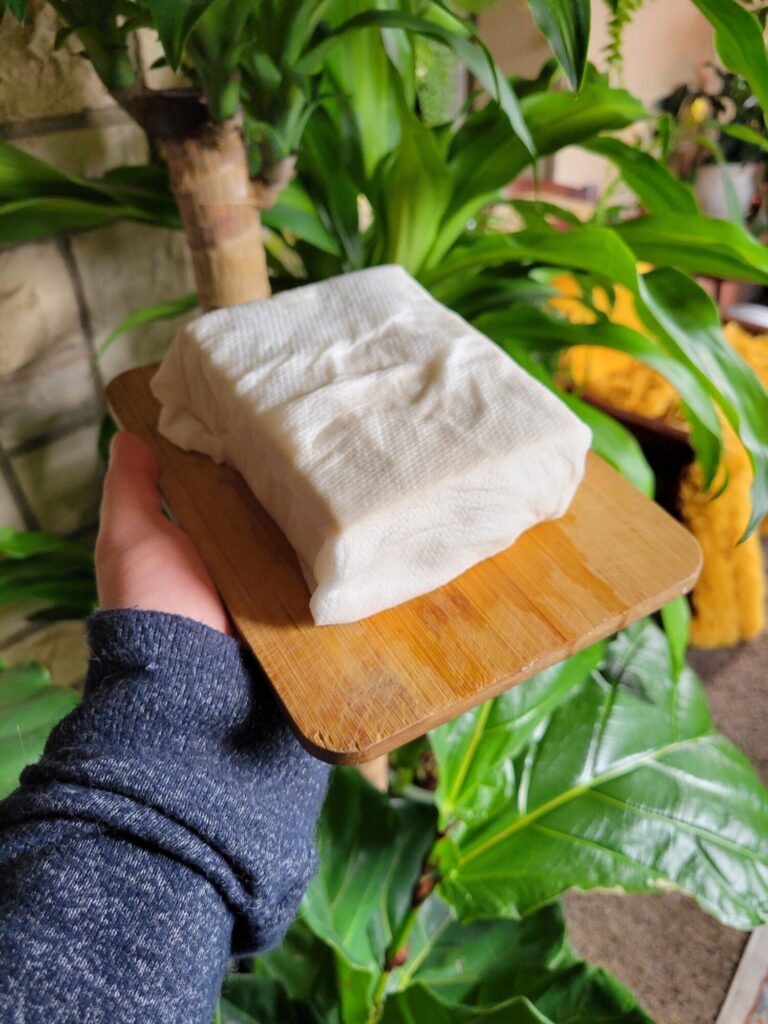
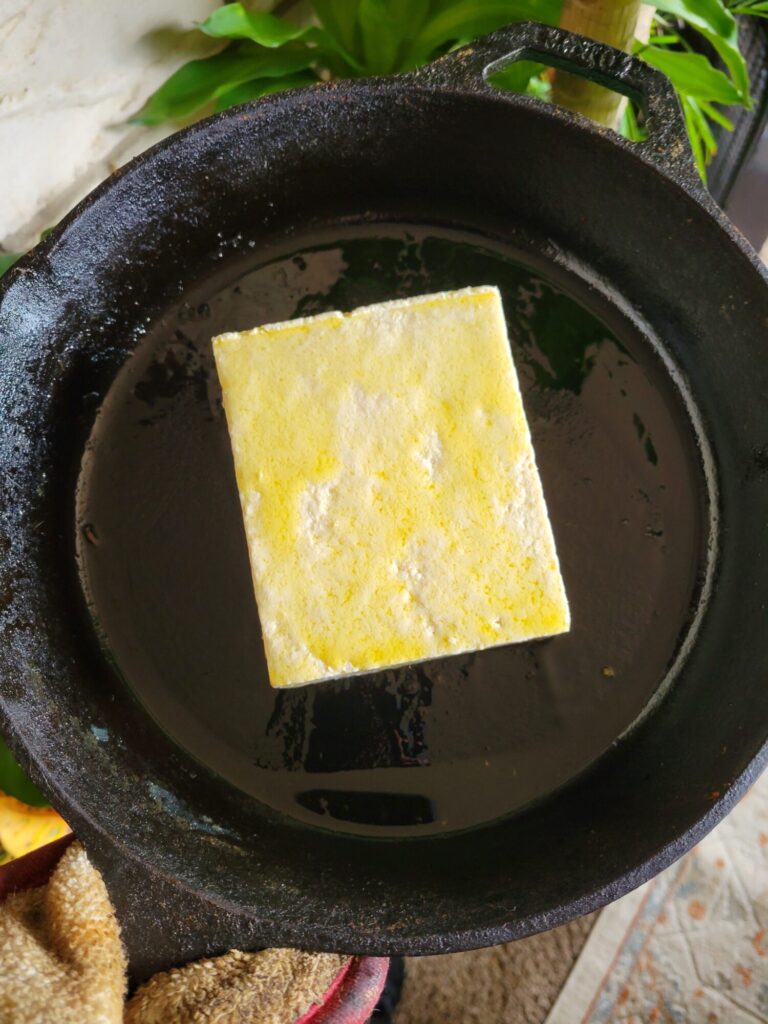
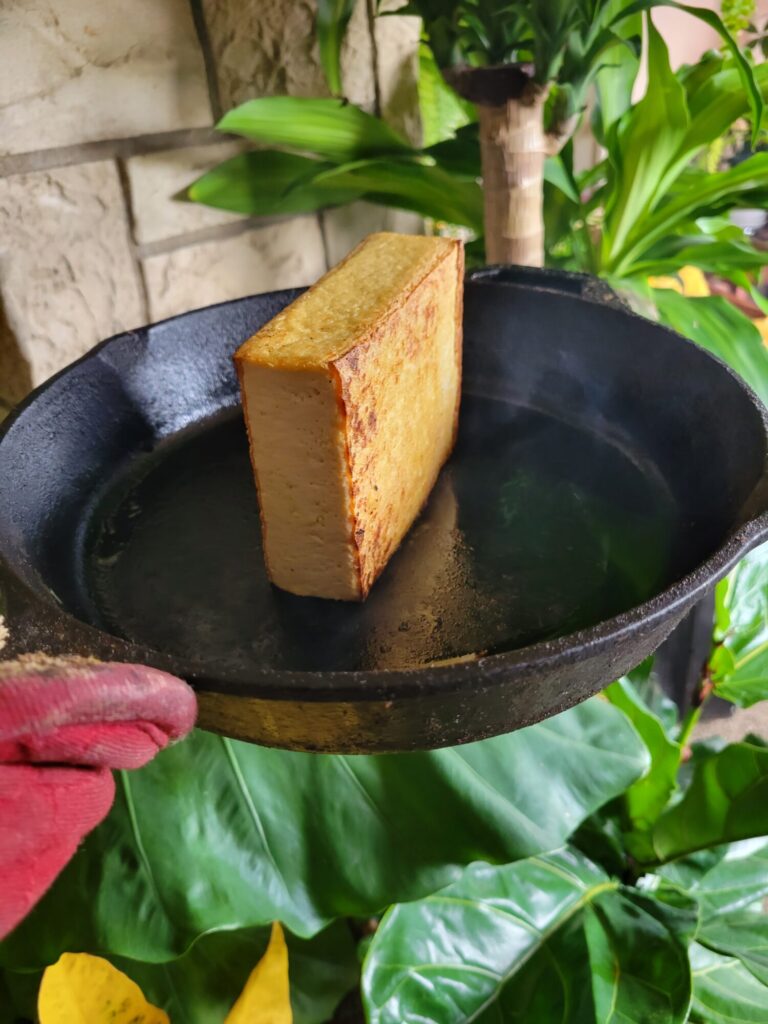
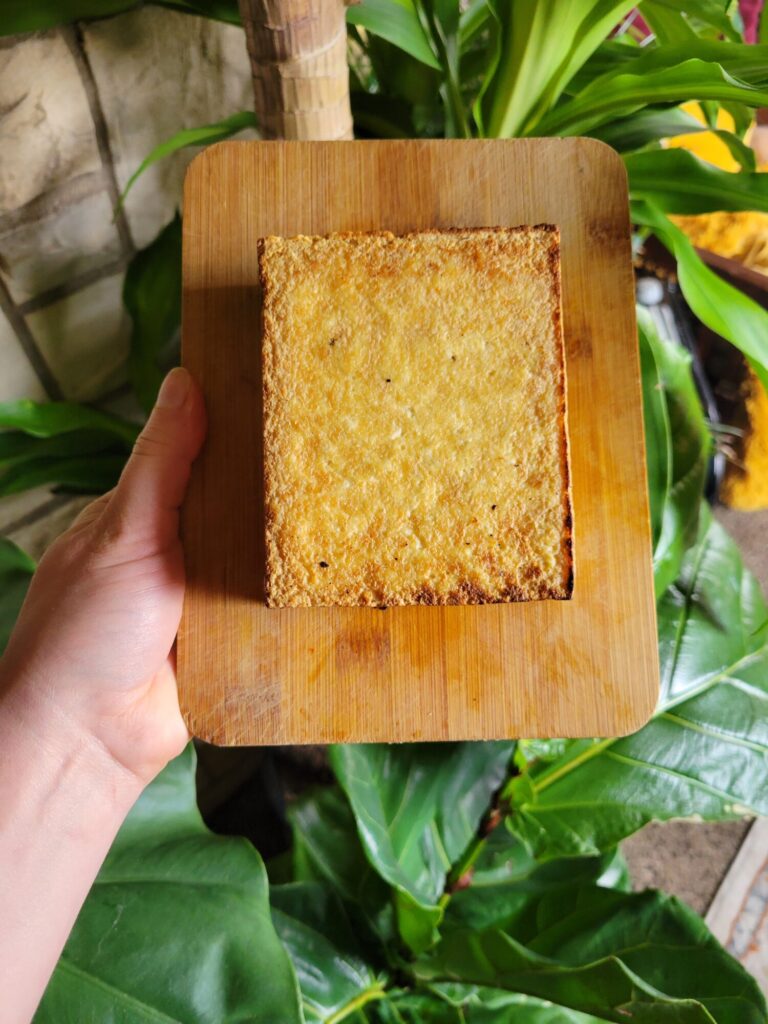
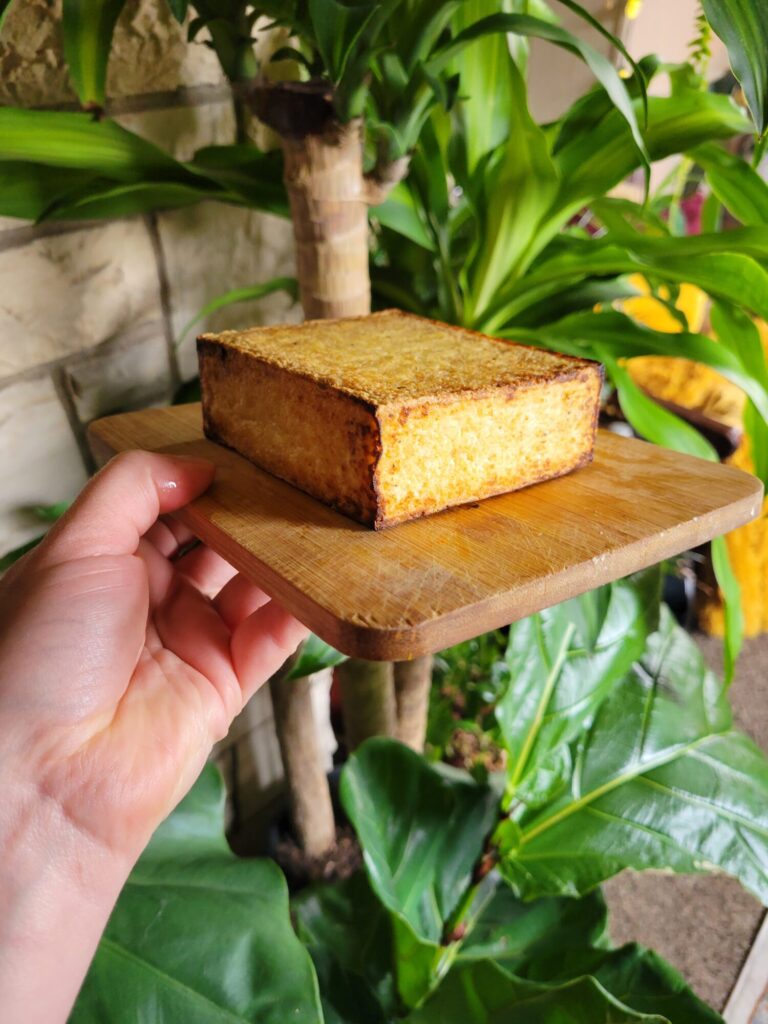


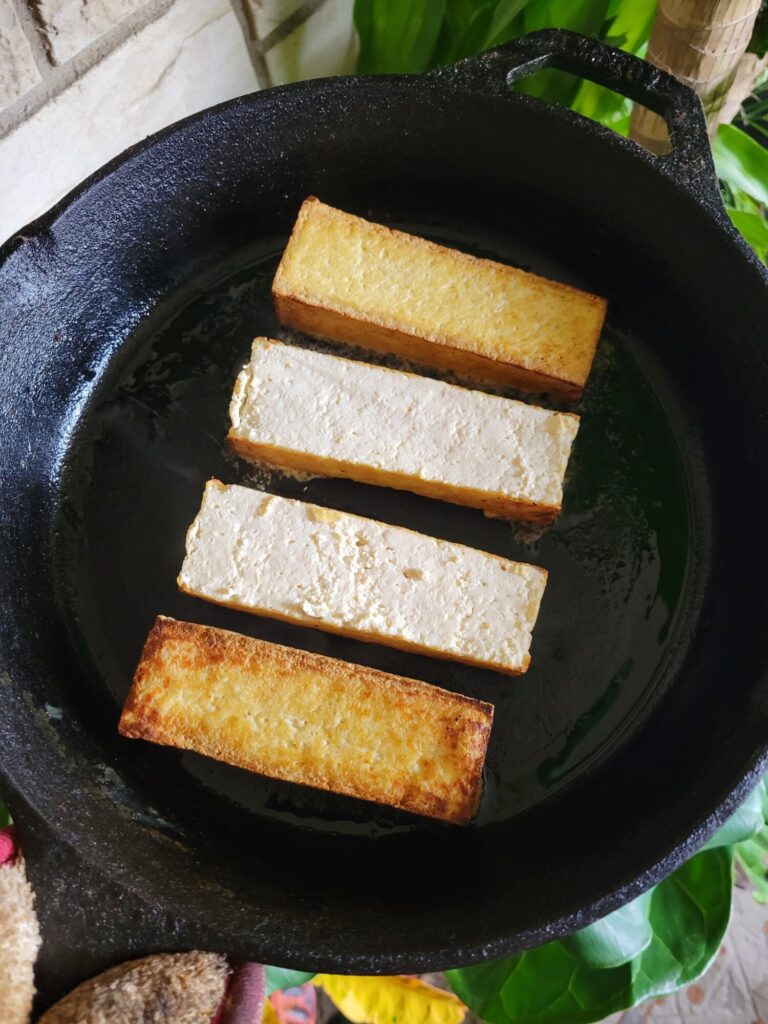
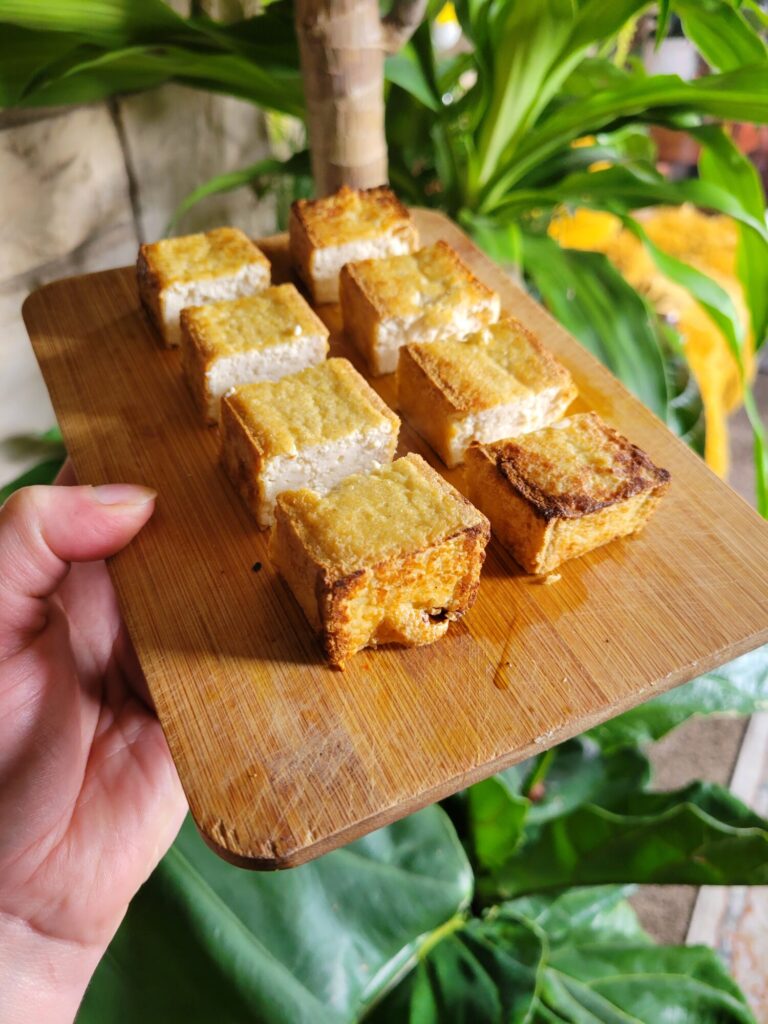
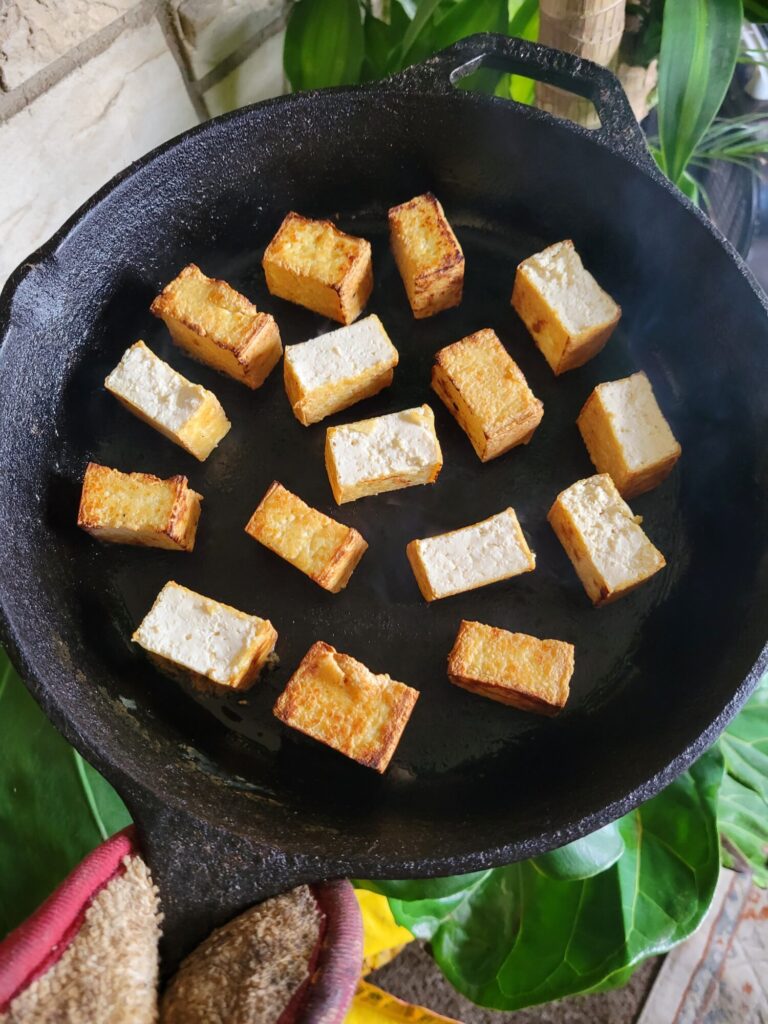
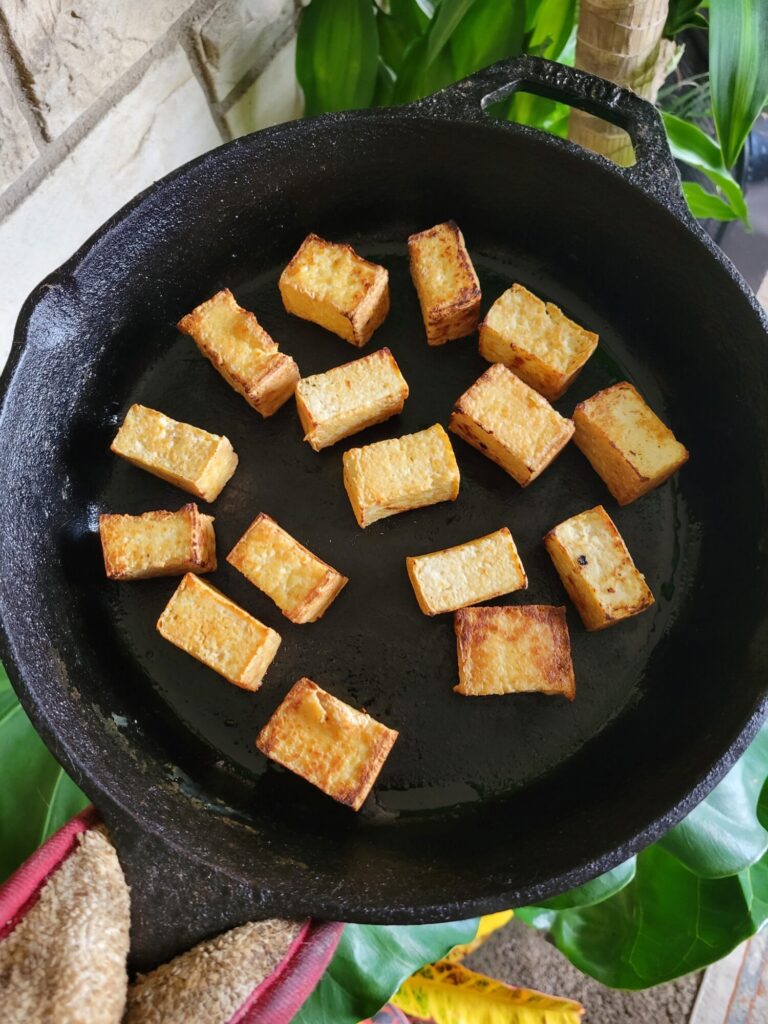

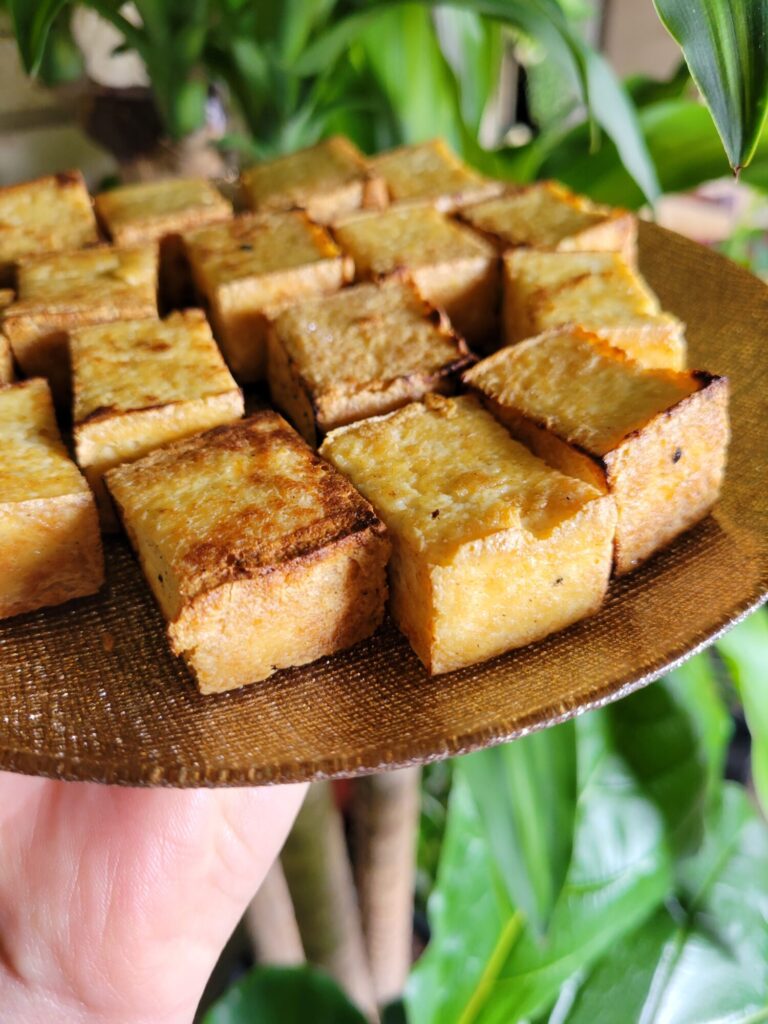

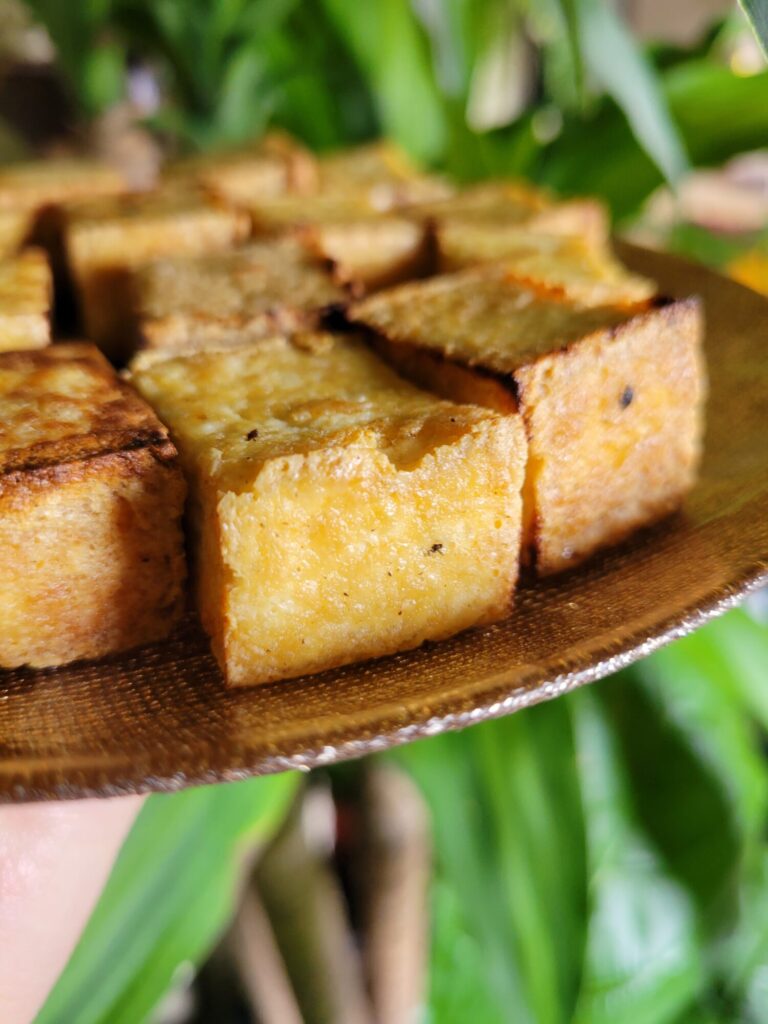

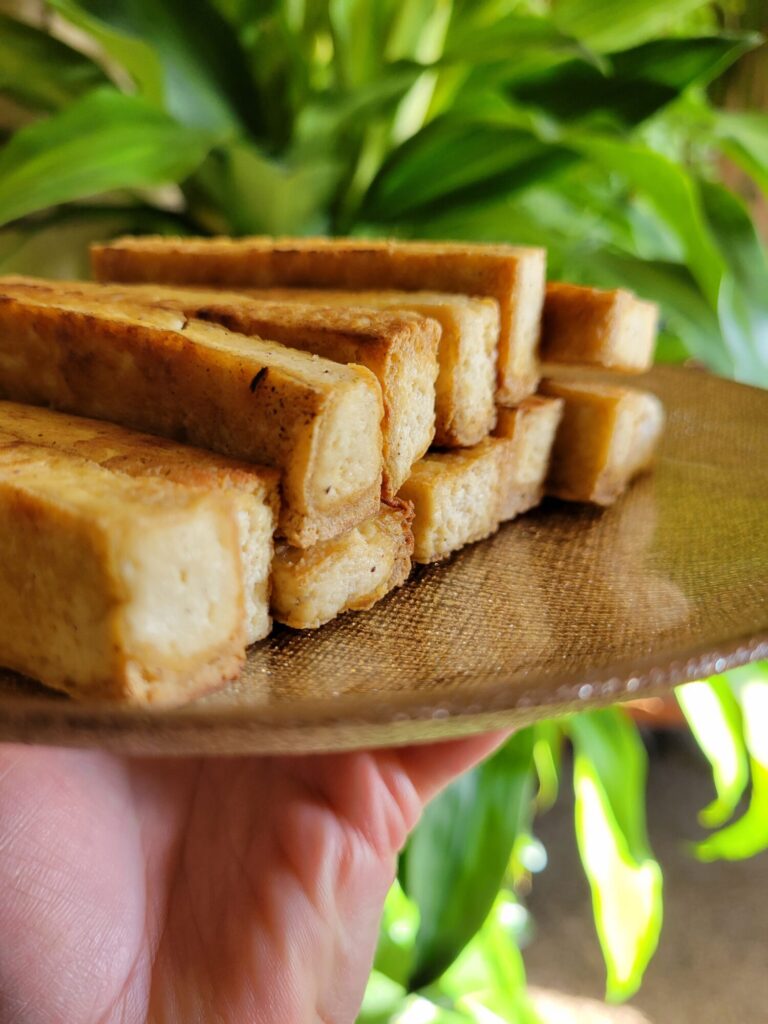
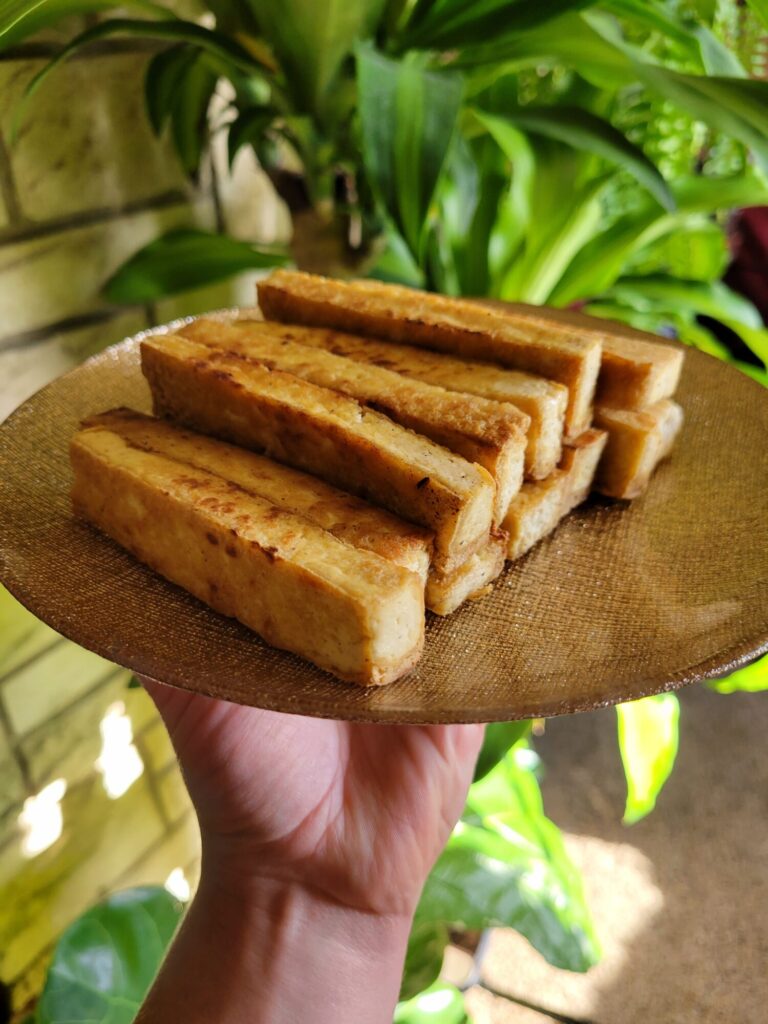
What to Make with Fried Tofu
Tofu is one of my favorite things to make. It gets a bad reputation for being an inedible vegan food. But, when actually prepared properly, it's absolutely delicious! It can be utilized in anything from vegan scrambles and salads to in burritos and curry.
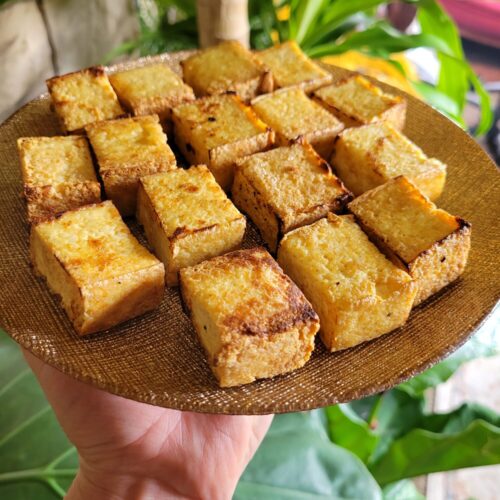
The Fundamentals of Fried Tofu
Equipment
- Skillet
- Stove
- Paper Towels
Ingredients
- 1 lbs tofu firm or extra firm
- 2 tbsp. high heat oil
Instructions
- Drain the tofu and cut in half if you're using a container. Wrap in paper towels to absorb the moisture.It's important to absorb as much water out of the tofu as you can. Oil is less dense than water, so the molecules repel one another. With cold ingredients, this causes separation. When you're frying, though, this can cause boiling hot oil to spray back at you.
- Meanwhile, preheat oil in a cast iron skillet over medium-high heat.
- When the skillet has preheated and the majority of the water has absorbed into the paper towels, carefully add the tofu to the skillet. Fry until golden brown. This should take about 2-4 minutes. Rotate until all sides are evenly fried.
- For tofu steak, this is as far as you need to go.If you want smaller pieces of tofu, I tend to cook the entire piece as a cube and then cut it up. This keeps the inside of the tofu from drying out too rapidly and becoming shriveled and chewy.So, after this stage, simply cut the tofu into strips or cubes and continue to cook the remaining sides.
- Remove from heat.It's optional to wrap again in a paper towels to absorb any excess oil if you're putting it in a dish that doesn't do well with additional oil, like soup and curry.
Tips, Tricks, & Notes
- It’s important to use a high heat oil when frying the tofu. You can use olive oil, but it burns at a lower temperature and will start to smoke. I prefer avocado, vegetable, or sesame oil, but any higher heat oil like canola or corn will work as well.
- If your tofu is cooking in less than 2 minutes, it runs the risk of burning. Decrease the temperature. If your tofu is cooking in more than 4 minutes, it can get tough. Increase the temperature. Ideally, the tofu will be golden brown on the outside and soft on the inside.
- Also softer forms of tofu will break apart. If you want vegan scrambled eggs? This is perfect. Just note that anything other than firm or extra firm tofu will likely not cube in any reasonable way, shape, or form!
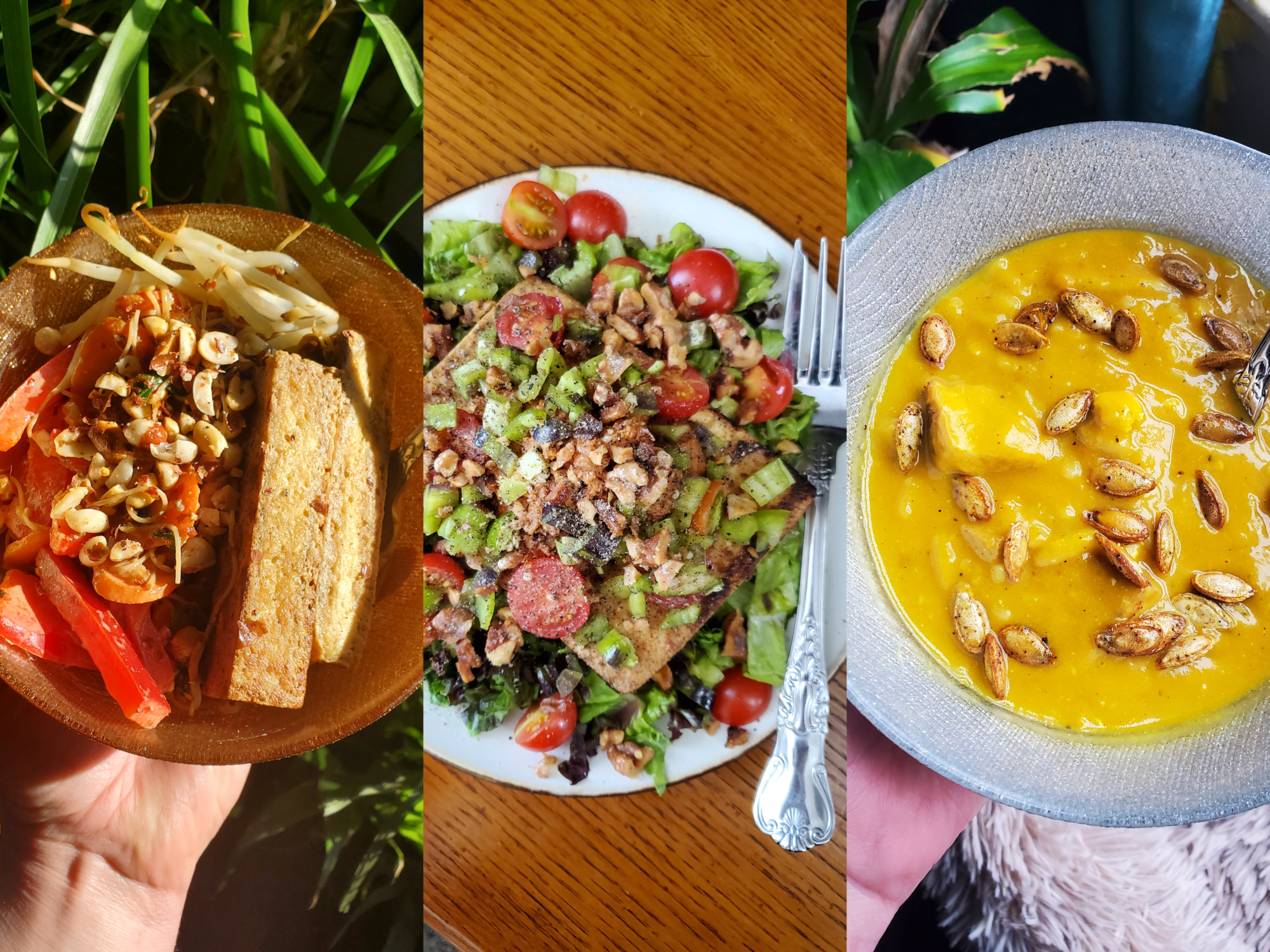
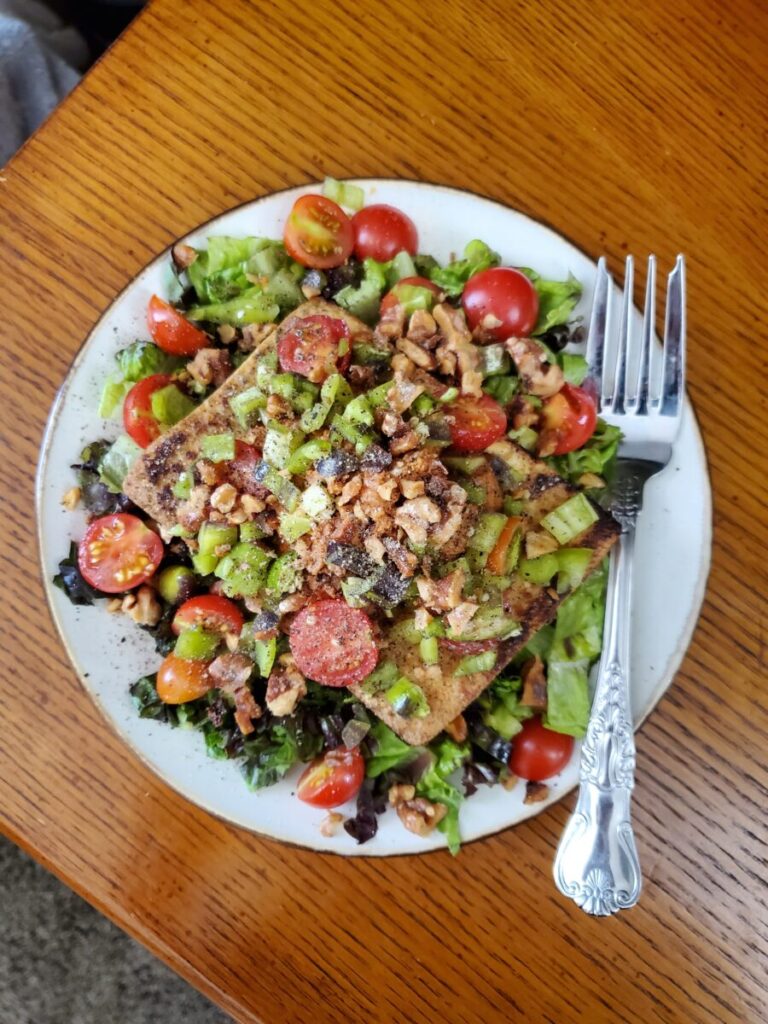
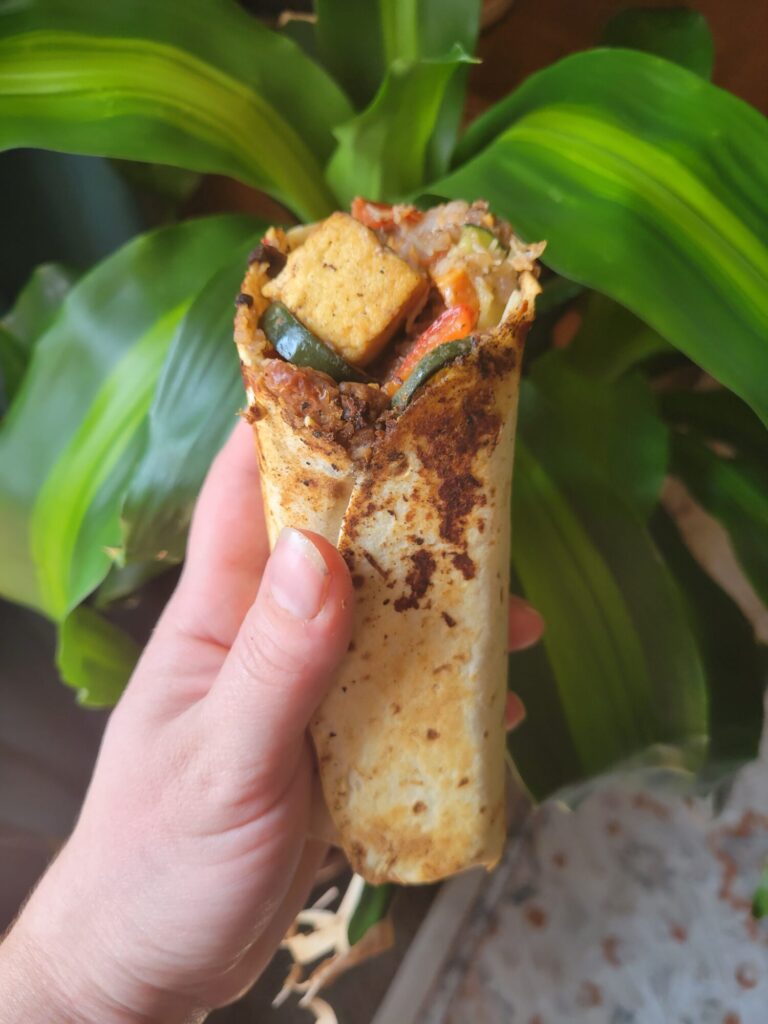
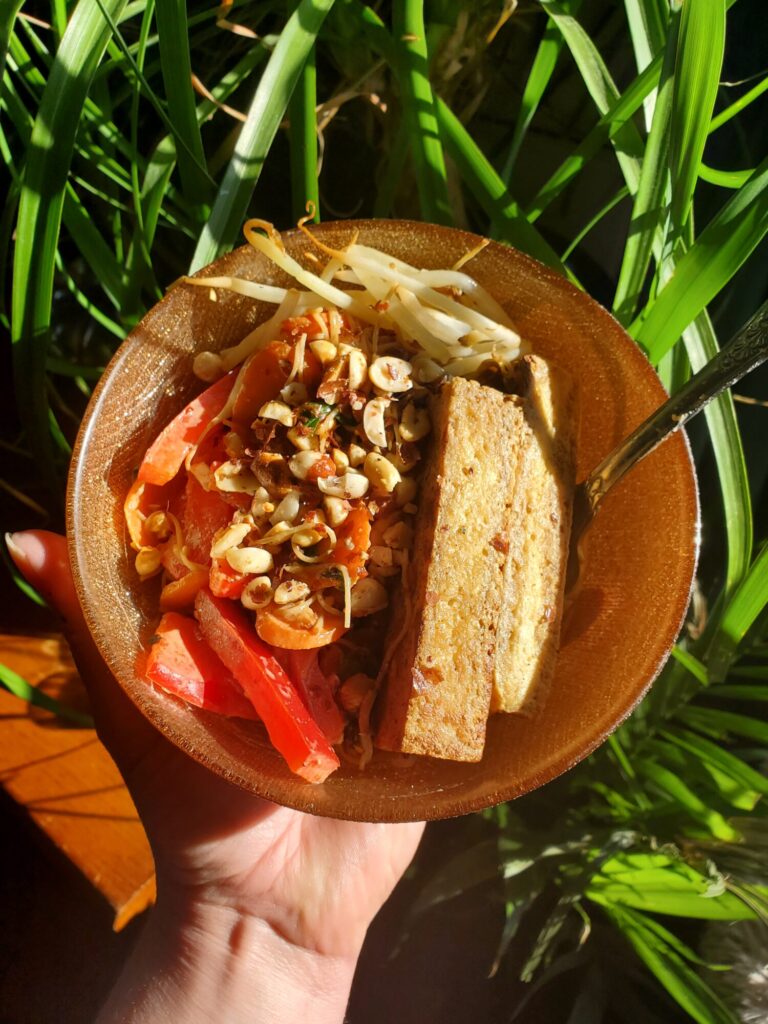


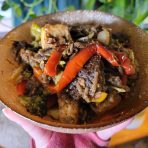

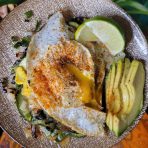


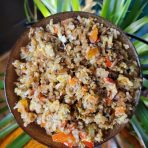
Leave a Reply